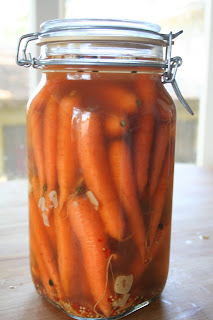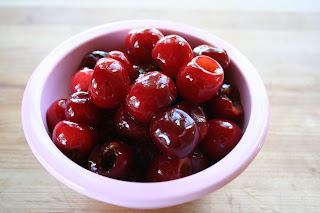 For many of us, food is the vehicle through which we experience life. We plan vacations around the restaurants we would like to visit. I think that the best way to experience the culture of an area is through the local food. For many who visit San Francisco, Tartine Bakery is one of those destinations.
For many of us, food is the vehicle through which we experience life. We plan vacations around the restaurants we would like to visit. I think that the best way to experience the culture of an area is through the local food. For many who visit San Francisco, Tartine Bakery is one of those destinations. They produce the best bread that I have ever had. It is a levain style with a moist chewy interior and crispy crust. I think it rivals the baguettes in France for my favorite bread ever. Tartine is located in a rather hip neighborhood and right next door to another destination restaurant, Delfina. It's also within a block or two of Bi-Right Creamery. I live in Oakland which is really just a short train ride into the city, but surprisingly I have only been to Tartine twice.
They produce the best bread that I have ever had. It is a levain style with a moist chewy interior and crispy crust. I think it rivals the baguettes in France for my favorite bread ever. Tartine is located in a rather hip neighborhood and right next door to another destination restaurant, Delfina. It's also within a block or two of Bi-Right Creamery. I live in Oakland which is really just a short train ride into the city, but surprisingly I have only been to Tartine twice. The first time I went I ordered one of their pressed sandwiches. It wasn't particularly memorable, but what I do remember are the pickled carrots that were served with it. Sweet, spicy, crunchy. I wished that I could just have a big plate of those. So when I saw a recipe for pickled carrots in Molly's book, I didn't hesitate, not even for a minute. Fortunately, I had just gotten some baby carrots at the farmer's market, and their fate was sealed.
The first time I went I ordered one of their pressed sandwiches. It wasn't particularly memorable, but what I do remember are the pickled carrots that were served with it. Sweet, spicy, crunchy. I wished that I could just have a big plate of those. So when I saw a recipe for pickled carrots in Molly's book, I didn't hesitate, not even for a minute. Fortunately, I had just gotten some baby carrots at the farmer's market, and their fate was sealed.
2 cups apple cider vinegar
2 cups water
1/4 cup granulated sugar
6 sprigs fresh thyme
5 large garlic cloves, thinly sliced
1 1/2 teaspoons black peppercorns, cracked
1 1/2 teaspoons red pepper flakes
Heaping 1 1/2 teaspoons salt
Heaping 2 teaspoons brown mustard seeds
1 1/2 pounds small (finger-sized) carrots, or standard carrots cut into sticks about 1/2 inch wide and 3 inches long
In a medium saucepan, combine 1 1/2 cups apple cider vinegar, water, sugar, thyme, garlic, black peppercorns, red pepper flakes, salt and mustard seeds. Bring to a boil over medium high heat, then reduce to a simmer and cook, stirring occasionally, for 10 minutes. Remove the pan from the heat, and let cool for 5 minutes. Stir in the remaining 1/2 cup vinegar.
Wash the carrots and put them in a large, heatproof bowl, and pour the warm brine over them. Cool to room temperature.
While the carrots cool, wash 2 quart sized canning jars and their lids in warm, soapy water.
When the carrots and brine are cool, distribute the carrots evenly among the jars, arranging them snugly. Divide the brine evenly among the jars. The carrots should be covered completely by the brine. If they are not, add a mixture of 2 parts vinegar and 1 part water to cover.
Seal firmly and refrigerate for at least 3 days, or, preferably, a week. Carrots are dense and take time to absorb the brine.
Note: Covered and refrigerated, the pickled carrots should last a month or two.


 The cream mixture is simmered and left to infuse with cacao nibs. Cacao nibs are the roasted, shelled cacao beans broken into bite-sized pieces. They are the raw material from which all chocolate is made. Nibs have a nutty flavor and are very crunchy. They are the essence of pure chocolate. I use them often in baking, so the notion of infusing their flavor into cream intrigued me.
The cream mixture is simmered and left to infuse with cacao nibs. Cacao nibs are the roasted, shelled cacao beans broken into bite-sized pieces. They are the raw material from which all chocolate is made. Nibs have a nutty flavor and are very crunchy. They are the essence of pure chocolate. I use them often in baking, so the notion of infusing their flavor into cream intrigued me.












 Actually, prepping artichokes isn't all that bad. And if you use baby artichokes, there isn't even a choke to clean out! Baby artichokes refer to the size of the artichokes not the age. The babies grow at the bottom of the artichoke plant and never fully develop.
Actually, prepping artichokes isn't all that bad. And if you use baby artichokes, there isn't even a choke to clean out! Baby artichokes refer to the size of the artichokes not the age. The babies grow at the bottom of the artichoke plant and never fully develop.  Once the prep is done, this dish is a cinch to make. Saute some chopped garlic and a few thyme sprigs briefly in some olive oil. Add the artichokes with a some of their lemon water and simmer until al dente. Then the artichokes are removed and the juices are concentrated and poured back over the artichokes. You end up with a richly flavored lemony broth.
Once the prep is done, this dish is a cinch to make. Saute some chopped garlic and a few thyme sprigs briefly in some olive oil. Add the artichokes with a some of their lemon water and simmer until al dente. Then the artichokes are removed and the juices are concentrated and poured back over the artichokes. You end up with a richly flavored lemony broth. I served these as a side to a roasted chicken and creamy polenta. But they were just as good, if not better, eaten straight from the bowl with my fingers while the bird was cooking.
I served these as a side to a roasted chicken and creamy polenta. But they were just as good, if not better, eaten straight from the bowl with my fingers while the bird was cooking. 


